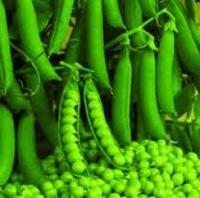
Pisum

Why develop pisum genomics?
Pisum is a genus of the Fabaceae family, It contains two species, P. fulvum and P. sativum. P. sativum includes several subspecies depending on taxonomic interpretation.Pea (Pisum sativum L.) was domesticated in the Middle-East ca. 10000 years ago and has become a major protein crop. Peas produce protein rich seeds and are able, as most legumes, to establish a symbiosis with N-fixing Rhizobium leguminosarum biovar viciae soil bacteria.Several stresses impact pea production throughout the world (including biotic : Aphanomyces root rot, Ascochyta blight, Aphids, Weevils, Sitona and abiotic: drought, heat, frost). Pisum genomic resources should help tackling these challenges.Pea has long been a plant model in genetics. In the mid-19th century, pea was used by Gregor Mendel as the first model plant of genetics. His observation of trait segregation in pea progenies led to the discovery of the laws of genetics. Thanks to large national and international programs, and driven by innovations in informatics and biotechnology, useful genomic resources are now available in pea. An atlas of the expression of its genes in many tissues, high density mapping, and the sequencing of its genome have provided useful tools for dissecting traits of interest.
Resources Tree view
Pea genome > The Pea Genome Project description
> Access to the Pisum sativum v1a JBrowse
> run BLAST against the Pisum sativum v1a banks
> Download the sequences of Pisum sativum v1a
Pea gene atlas > Access to Pea Gene Atlas
Contacts
Judith Burstin, Jonathan Kreplak, Grégoire Aubert, Agroécologie, AgroSup Dijon, INRA, Univ. Bourgogne, Univ. Bourgogne Franche-Comté, F-21000 Dijon, France
Creation date: 18 Aug 2010
 eZ Publish
eZ PublishPublication supervisor: A-F. Adam-Blondon
Read Credits & General Terms of Use
Read How to cite








